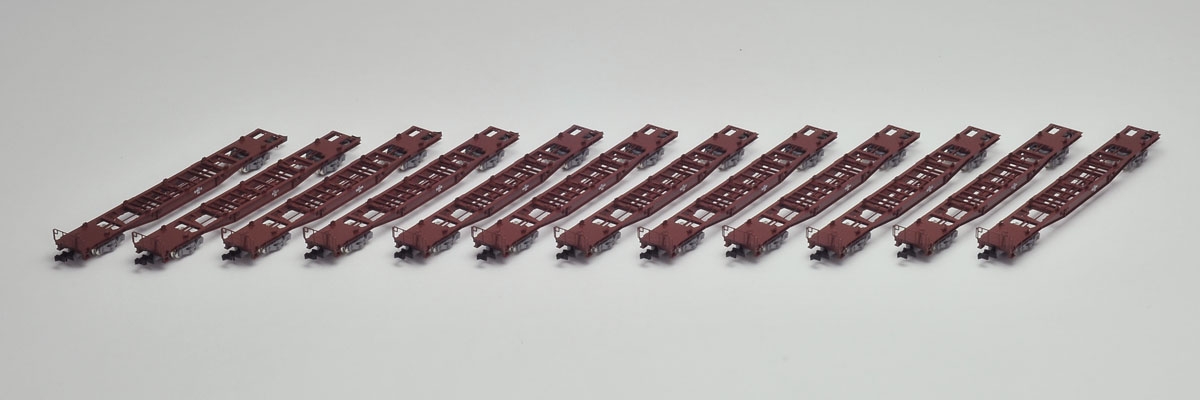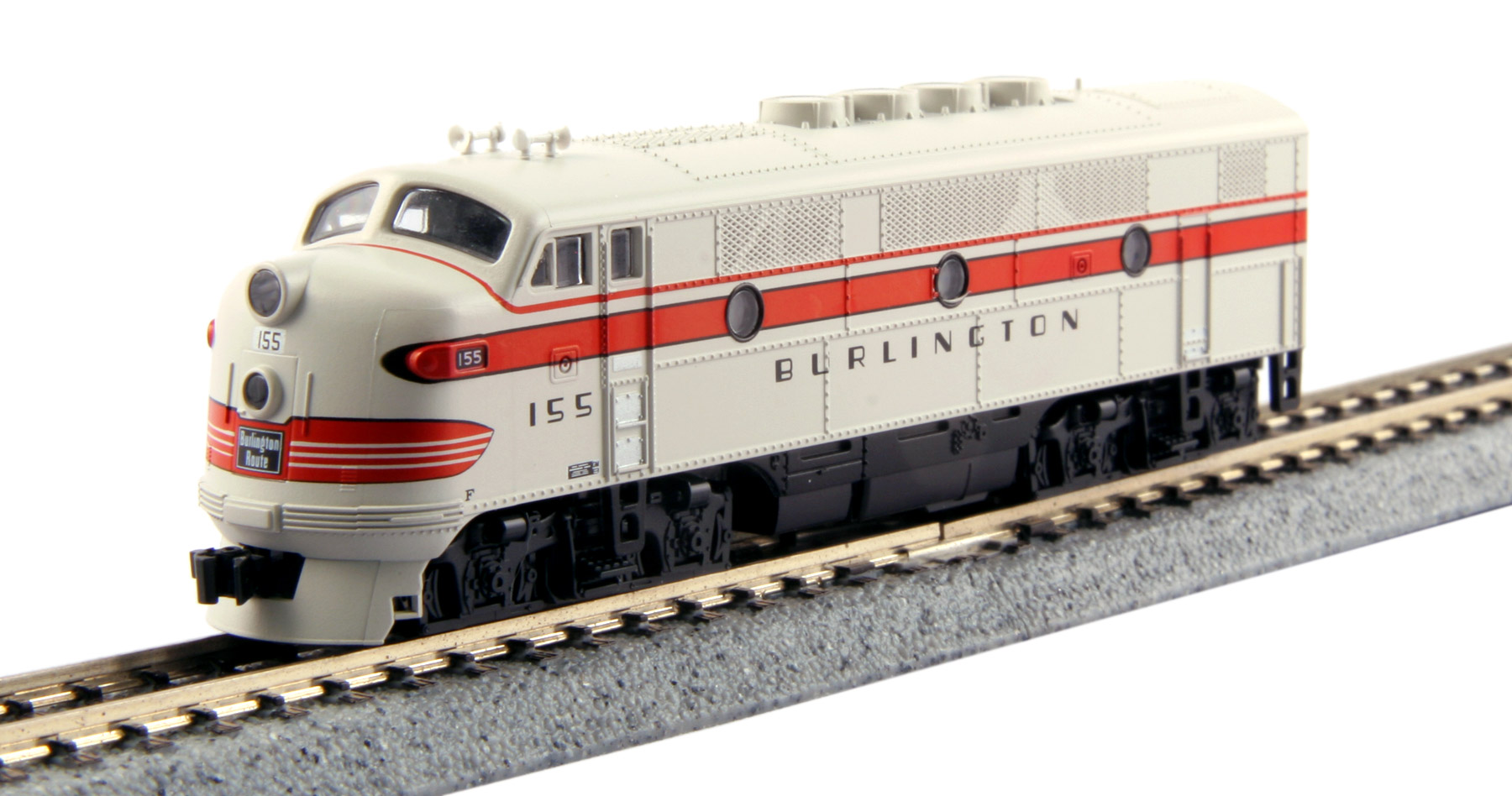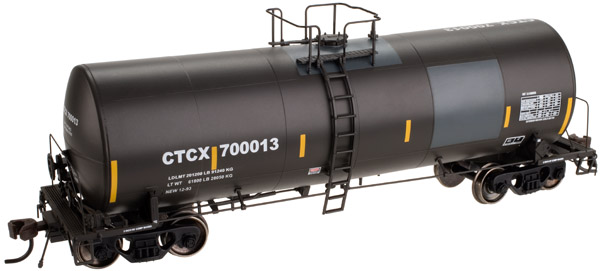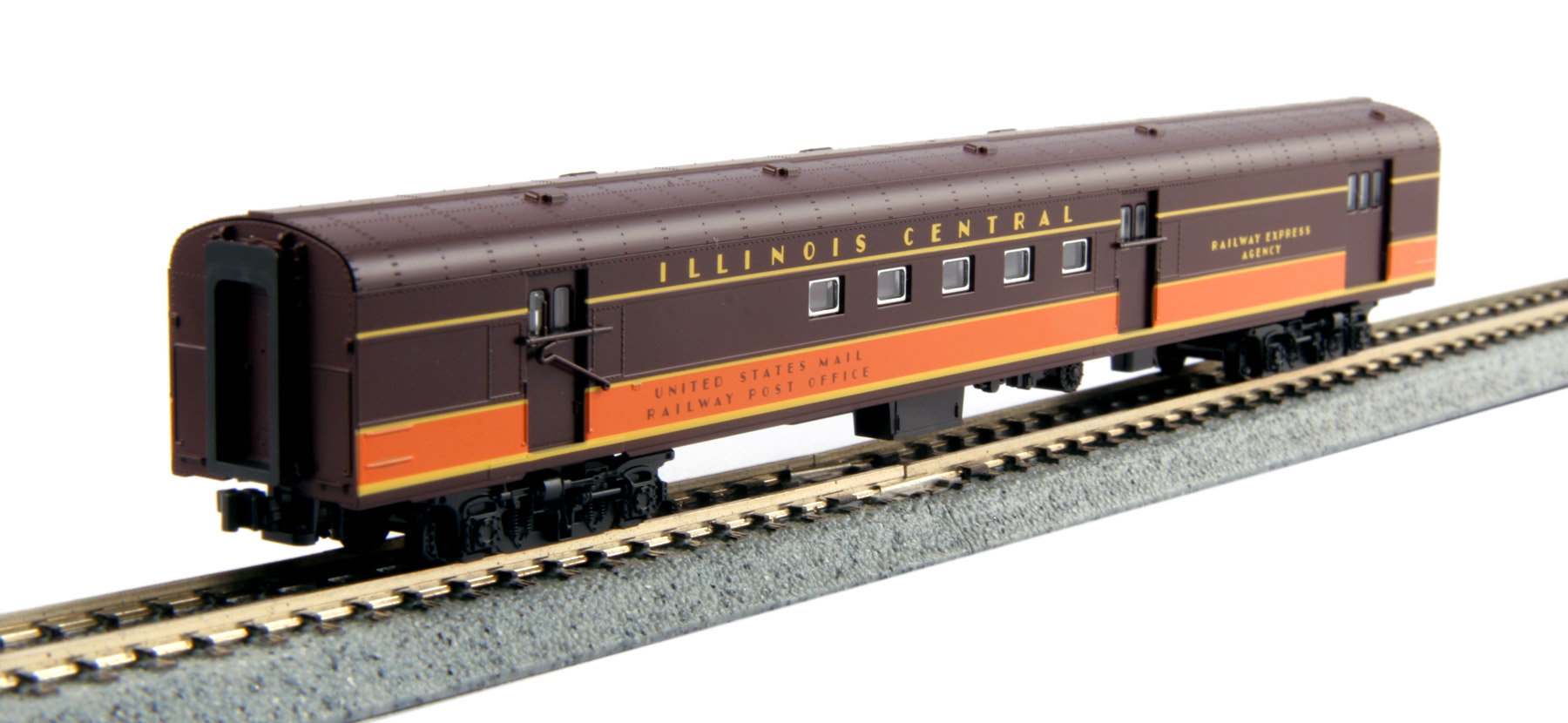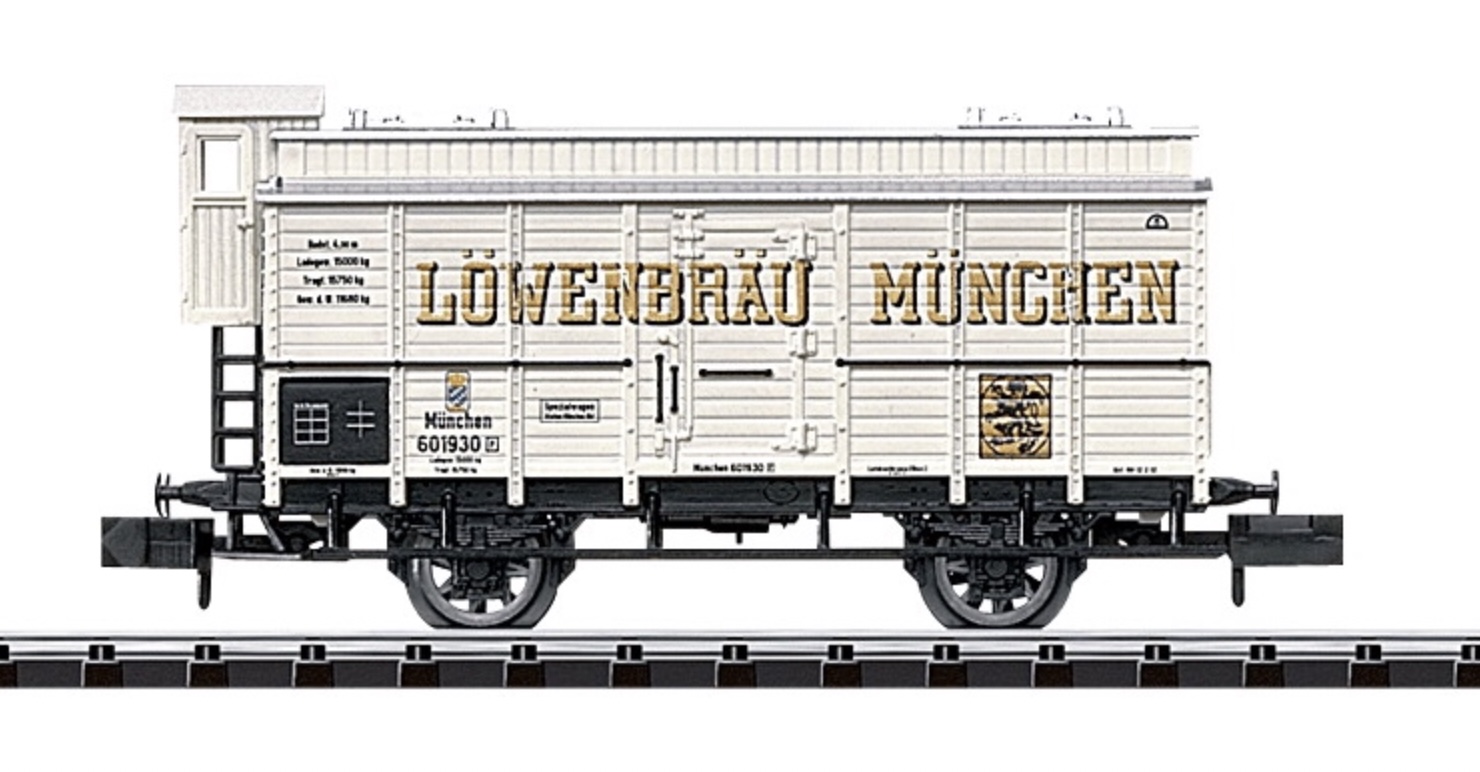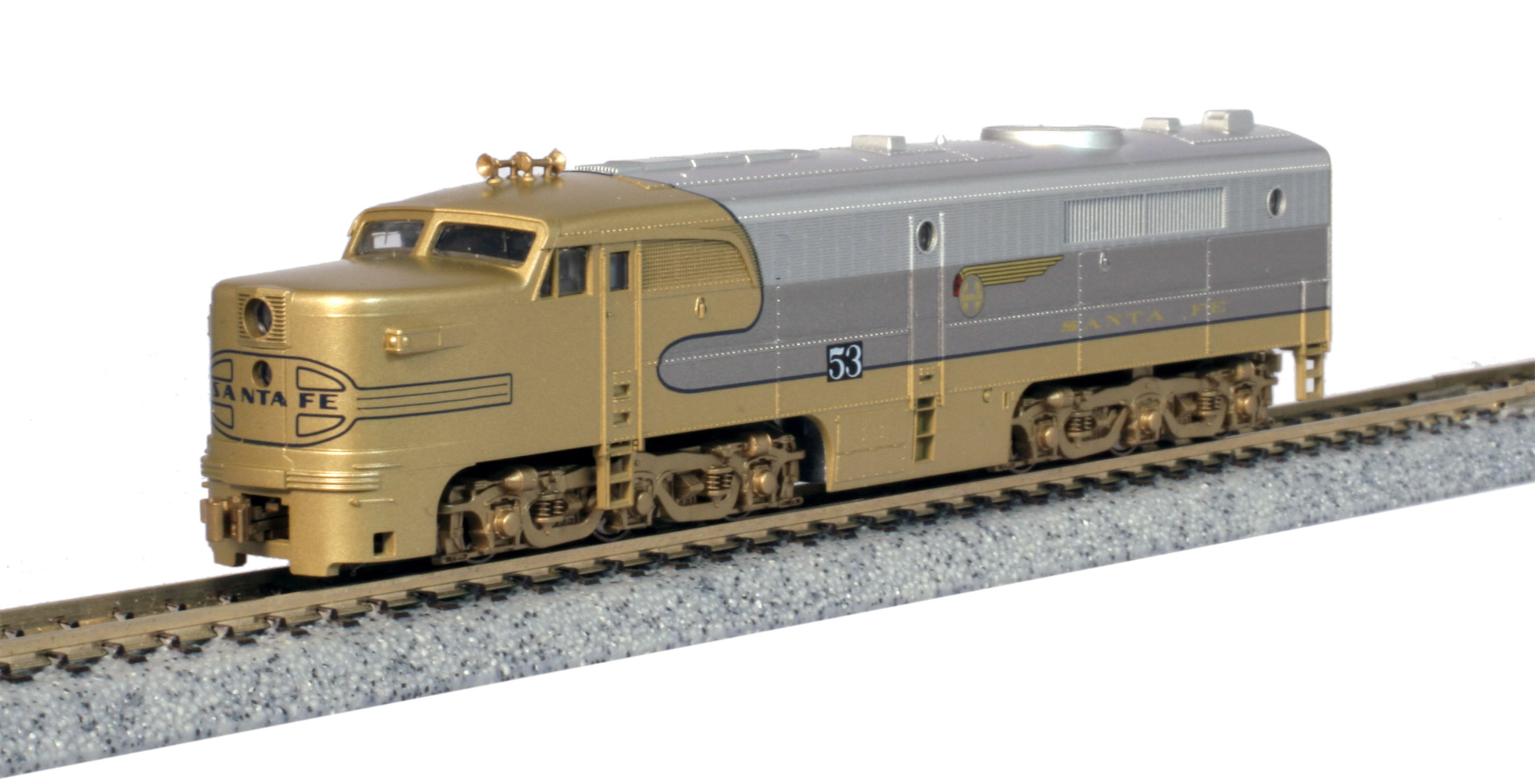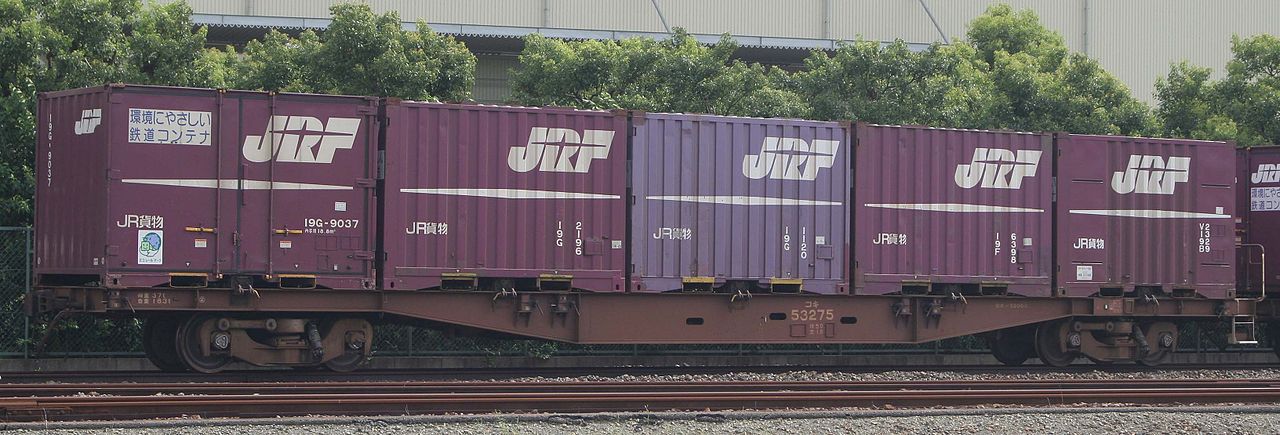Specific Item Information: Koki 50000 is a container freight car manufactured from 1971. It is designed to hold 5 12ft 5t containers and 3 20ft 10t containers. From 1991, the color of the dolly was changed to gray. All vehicles are scheduled to retire in 2017.
Prototype History: The KOKI 50000 was introduced in 1971, with the ability to carry 20-foot containers for rail/truck use. Similarly to the KOKI 10000, this was based on the open-deck side-frame design used in the KOKI 5500. The standard top speed was 95 kph, but some variants for 100 kph (series 250000) and 110 kph (series 350000) use were created. When JR Freight adopted these, the standard red color was changed to green on the 250000 series cars, as they were no longer always used in dedicated express trains. Some 350000 series trains with “electromagnetic brakes” were created, and painted “Shonan Orange” to distinguish them from other cars. The general 50000-series trains are apparently still in use, but are being replaced by the KOKI 107. Some were also converted to TIKI 100 and TIKI 900 series flatcars.
The KOKIFU 50000 is a variant incorporating the conductor’s room on the end, as the YO caboose cannot be used at the operating speed of the KOKI 10000 and 50000.
Read more of Japanese freight cars on Sumida Crossing website.
The KOKIFU 50000 is a variant incorporating the conductor’s room on the end, as the YO caboose cannot be used at the operating speed of the KOKI 10000 and 50000.
Read more of Japanese freight cars on Sumida Crossing website.
Road Name History: Japan Freight Railway Company (日本貨物鉄道株式会社 Nihon Kamotsu Tetsudō Kabushiki-gaisha), or JR Freight (JR貨物 Jeiāru Kamotsu), is one of the constituent companies of Japan Railways Group (JR Group). It provides transportation of cargo nationwide. Its headquarters are in Shibuya, Tokyo near Shinjuku Station.
The Japan Railways Group was founded on April 1, 1987, when Japanese National Railways (JNR) was privatized, and then divided into six regional companies and Japan Freight Railway Company. Although the passenger operation of JNR was split into six companies, fares and regulations are standard for all companies and every region of Japan except Okinawa is covered by the railway network spanning approximately 19,800 kilometres (12,300 mi).
Formerly part of JNR, the freight operation was not divided and became a single separate company when JNR was privatized and split. Although it has only about fifty kilometers of track of its own, it also operates on track owned by the JR passenger railways and other companies. The company uses the initials JRF as an abbreviated name for identification.
From Wikipedia
The Japan Railways Group was founded on April 1, 1987, when Japanese National Railways (JNR) was privatized, and then divided into six regional companies and Japan Freight Railway Company. Although the passenger operation of JNR was split into six companies, fares and regulations are standard for all companies and every region of Japan except Okinawa is covered by the railway network spanning approximately 19,800 kilometres (12,300 mi).
Formerly part of JNR, the freight operation was not divided and became a single separate company when JNR was privatized and split. Although it has only about fifty kilometers of track of its own, it also operates on track owned by the JR passenger railways and other companies. The company uses the initials JRF as an abbreviated name for identification.
From Wikipedia
Brand/Importer Information:  Tomix is a brand of Takara Tomy, a large Japanese conglomerate of companies that makes toys and games for the international marketplace. The Tomix brand (along with the Tomytec brand) are both managed by the Tomytec subsidiary/division of Takara Tomy. Prior to 1976 Tomy produced model trains using the "Tomy" brand name of the products. In 1976, they launched the new brand "Tomix" to segregate their model trains from their childrens toy lines.
Tomix is a brand of Takara Tomy, a large Japanese conglomerate of companies that makes toys and games for the international marketplace. The Tomix brand (along with the Tomytec brand) are both managed by the Tomytec subsidiary/division of Takara Tomy. Prior to 1976 Tomy produced model trains using the "Tomy" brand name of the products. In 1976, they launched the new brand "Tomix" to segregate their model trains from their childrens toy lines.
Generally it can be difficult to understand why Tomytec releases some items using the Tomix brand and others using the Tomytec brand. There are some generalizations we have observed. Thomas the Tank Engine falls under Tomix, as do the JNR steam engines as well as bullet trains (Shinkansen) and track cleaning cars. Maybe another curator can step in and elaborate on this section.

Generally it can be difficult to understand why Tomytec releases some items using the Tomix brand and others using the Tomytec brand. There are some generalizations we have observed. Thomas the Tank Engine falls under Tomix, as do the JNR steam engines as well as bullet trains (Shinkansen) and track cleaning cars. Maybe another curator can step in and elaborate on this section.
Manufacturer Information: 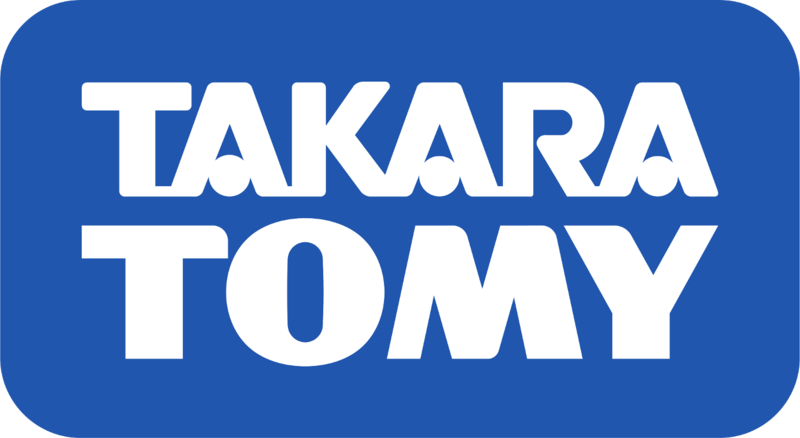 Largely a Japanese manufacturer of children's toys and baby products, Takara Tomy has established a number of different subsidiary companies, with sales offices and factories located in various locations around the world. The firm is the product of a 2006 merger-of-equals between Tomy and Takara.
Largely a Japanese manufacturer of children's toys and baby products, Takara Tomy has established a number of different subsidiary companies, with sales offices and factories located in various locations around the world. The firm is the product of a 2006 merger-of-equals between Tomy and Takara.
Takara Tomy produces N Scale model trains under their Tomytec division (we use the term loosely because it is actually a more complex relationship) using two different brand names "Tomytec" and "Tomix". Technically speaking these are not brands in the Western sense but rather they more closely resemble subsidiaries -of-subsidiaries, and where they fit in the corporate org chart may be the matter for a Master's thesis, but for our purposes we can think of them as simply two different brands with one manufacturer. In the past (prior to 1976) some model train products were branded simply "Tomy". To further confuse things, since 2000, outside of Japan, the company goes by the simple name, "Tomy" for their international subsidiaries.
If you consider both brand names as a single company, then the Tomytec/Tomix product line is the largest of its kind in Japan; with Kato following in second place (as of 2017). While Takara Tomy products are popular around the world, the firm's focus on children's toys has limited the international acceptance and distribution of its Tomytec model railroad products. Furthermore, unlike Kato, their focus tends to be heavily skewed towards Japanes prototypes.

Takara Tomy produces N Scale model trains under their Tomytec division (we use the term loosely because it is actually a more complex relationship) using two different brand names "Tomytec" and "Tomix". Technically speaking these are not brands in the Western sense but rather they more closely resemble subsidiaries -of-subsidiaries, and where they fit in the corporate org chart may be the matter for a Master's thesis, but for our purposes we can think of them as simply two different brands with one manufacturer. In the past (prior to 1976) some model train products were branded simply "Tomy". To further confuse things, since 2000, outside of Japan, the company goes by the simple name, "Tomy" for their international subsidiaries.
If you consider both brand names as a single company, then the Tomytec/Tomix product line is the largest of its kind in Japan; with Kato following in second place (as of 2017). While Takara Tomy products are popular around the world, the firm's focus on children's toys has limited the international acceptance and distribution of its Tomytec model railroad products. Furthermore, unlike Kato, their focus tends to be heavily skewed towards Japanes prototypes.
Item created by: CNW400 on 2022-02-16 11:37:10
If you see errors or missing data in this entry, please feel free to log in and edit it. Anyone with a Gmail account can log in instantly.
If you see errors or missing data in this entry, please feel free to log in and edit it. Anyone with a Gmail account can log in instantly.


